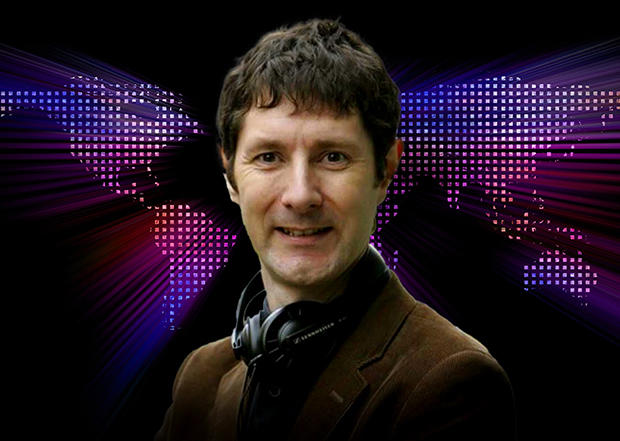The Sound Book - Trevor Cox


The Sound Book - The Science of the Sonic Wonders of the World
Trevor Cox, Professor of acoustic engineering, presenter of twenty BBC radio documentaries, appearances on National Geographic & Discovery channels; Trevor’s book inspires us to be better listeners in a world dominated by visuals and journey into the science of the sonic wonders of the world.
by TREVOR COX | 2024

Excerpt from Chapter 7:
The Quietest Places in the World pp 208 - 210
While on my expedition to record singing sand dunes, I experienced something quite rare: complete silence. The scorching summer heat kept visitors away; most of the time my recording companion, Diane Hope, and I were on our own. We camped at the foot of Kelso Dunes, in a barren, scrubby valley with dramatic granite hills behind us. Virtually no planes flew overhead, and only very occasionally did a distant car or freight train create noise. The conditions were wonderful for recording. No noise meant there was no need for second takes. Much of the day, however, there was a great deal of wind, which often whistled past my ears. But at twilight and early in the morning the winds calmed down, and the quiet revealed itself. Overnight I heard the silence being interrupted only once, when a pack of nearby coyotes howled like ghostly babies, unnerving me with their near-musical whistling and chattering.
High up on a dune, early on the second morning, I was waiting for Diane to set up some recording equipment. Since she was some distance away, I had a chance to contemplate real silence. The ear is exquisitely sensitive. When perceiving the quietest murmur, the tiny bones of the middle ear, which transmit sound from the eardrum to the inner ear, vibrate by less than the diameter of a hydrogen atom1. Even in silence, tiny vibrations of molecules move different parts of the auditory apparatus. These constant movements have nothing to do with sound; they stem from random molecular motion. If the human ear were any more sensitive, it would not hear more sounds from outside; instead, it would just hear the hiss generated by the thermal agitation of the eardrum, the stapes bone of the middle ear, and the ear cells in the cochlea.
On the dunes, I could hear a high-pitched sound. It was barely audible, but I worried that I might be experiencing tinnitus- that is, ringing in the ears, perhaps evidence of hearing damage caused by my excessively loud saxophone playing. Medics define tinnitus as perceiving sound where there is no external source. For 5 – 15 percent of the population it leads to sleepless nights, impaired performance at tasks, and distress.2
Theories of tinnitus abound, but most experts agree that it is caused by some sort of neural reorganisation triggered by diminished input from outside sounds. Hair cells within the inner ear turn vibrations into electrical signals, which then travel up the auditory nerve into the brain. But this is not a one-way street, electrical pulses flow in both directions, with the brain sending signals back down to change how the inner ear responds, In a silent place, or when hearing is damaged, auditory neurons in the brain stem increase the amplification of the signals from the auditory nerve to compensate for the lack of sound. As an unwanted side effect, spontaneous activity in the auditory nerve fibres increases, leading to neural noise, which is perceived as a whistle, hiss, or hum.3 Maybe what I was hearing on the dunes was the idling noise of my brain while it searched in vain for sounds. One thing I noticed was that this high-frequency whistle was not always there-maybe a sign that, after a while, my brain habituated to the noise.
In contrast to the variable silence on the dunes, at my university there is an anechoic chamber, a room that provides unchanging, guaranteed silence, uninterrupted by wind, animals, or human noise. The anechoic chamber never fails to impress visitors, even though the entrance is utilitarian and uninspiring. Just outside the entrance they see dusty metal walkways, and nearby, builders are often making lots of noise constructing test walls in neighbouring laboratory. These walls will be analysed for how well they keep sound from passing through them. Guarding the anechoic chamber are heavy, gray, metal doors. In fact, you have to go through three doors to reach the chamber, because it is a room within a room. To make the place silent, several sets of heavy walls insulate the innermost room, stopping outside noise from entering.
1. C.J.Plack, The Sense of Hearing (New York: Psychology Press, 2014),53
2. J.J. Eggermont and L.E.Roberts "The Neuroscience of Tinnitus" Trends in Neuroscience 27 (2004): 676-82
3. R. Schatte and D. McAlpine, "Tinnitus with a Normal Audiogram: Physiological Evidence for Hidden Hearing Loss and Computational Model," Journal of Neuroscience 31 (2011): 13452-57
Excerpted from The Sound Book: The Science of the Sonic Wonders of the World by Trevor Cox. Copyright © 2014 by Trevor Cox. Used with permission of the publisher, W. W. Norton & Company, Inc. All rights reserved.


 Quiet Mark Founder
Quiet Mark Founder